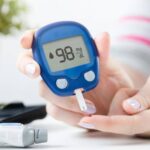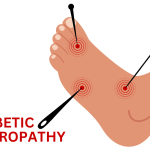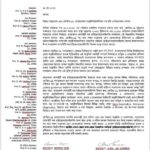Exercise is more beneficial than medication for diabetic patients. It keeps the glucose level under control very well.
Exercise expends energy, which leads to weight loss. It increases the production of insulin from the beta cells of the pancreas. Exercise also increases the effectiveness of insulin. As a result, the little insulin produced in the body keeps glucose under control.
- Exercise increases blood circulation in the body.
- Exercise increases good cholesterol (HDL) and lowers bad cholesterol (LDL). Reduces high blood pressure. Exercise keeps the mind fresh and cheerful by removing anxiety. Sleep is also good.
- It strengthens bones and the heart. Keeps bone joints active and boosts immunity.

Exercise for diabetics
Aerobic Exercise: Walking, running, jogging, cycling, and swimming are aerobic exercises. In these, many muscles are active for a long time. Energy loss is high. In this exercise, pulse speed, and breathing increase.
Straining exercise: This exercise increases muscle strength. Exercises like weight lifting or spring pulling. However, such exercise cannot be started without a doctor’s advice.
Stretching: The purpose of this exercise is to overcome the inertia of muscle and bone joints. Stretching should be done before beginning aerobic exercise.
Balancing Exercise: It is an exercise to maintain balance. For example, standing on one leg for a while. Such exercises improve the patient’s balance.
How many days a week and how long?
- Aerobic exercise at least five days a week and 30 minutes a day is beneficial in most cases. If you can’t exercise for 30 minutes at a time, you can exercise for 10 minutes three times a day. Exercise can be done for 10 minutes three times a day before meals.
- There is nothing wrong with starting exercise, but in diabetic patients, it is best to consult a doctor, especially if there are any complications.
- Gradually increase the amount of exercise. Increase by five minutes per day to 150 to 200 minutes per week.
- Warm-up and stretching should be done at the beginning of the exercise. Do not stop suddenly and gradually reduce the last five minutes to stop exercising.
When not to exercise
- It will depend on your daily activities, meal times, what medicines you take, blood glucose levels, etc.
- Do not exercise if the blood glucose level after eating is above 300 mg or 250 mg on an empty stomach. Do not exercise immediately after eating.
- Do not exercise in the sun. Excessive temperature can lead to dehydration due to the loss of water from the body. It is better to exercise in the morning or in the evening.
- Brisk walking is excellent exercise. However, it cannot be done if there is osteoarthritis in the knee or if there is less feeling in the leg due to nerve damage.
- Wear comfortable shoes and cotton socks. If blisters, pain, or red feet occur after walking, consult a doctor.
- Exercise-induced hypoglycemia
- If you take insulin and sulfonylureas or meglitinide diabetes medications, exercise can cause hypoglycemia, when blood glucose levels fall dangerously low. Its symptoms are – dizziness, increased pulse rate, hunger, weakness, sweating, etc.
- Check blood glucose levels before starting exercise. If it is below 100 mg, eat something.
- If taking insulin, consult a doctor. Keep glucose, sugar, or sweet fruit juice in your pocket while exercising. Eat when you feel bad.
- If you have to exercise for a long time, you can eat something before finishing the exercise. Drink water before, during, or after exercise.
- Check glucose again after exercise. Get an idea of how much exercise lowers glucose.



















